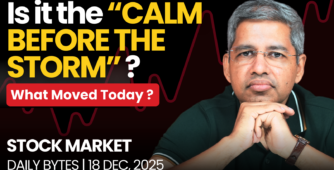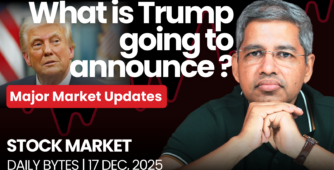Today seemed like a day where the market might break out on the higher side. The last three sessions were in a very tight range, and there was a gap below the range, which opened up the potential for the market to go up. However, the market collapsed and filled the entire gap during the day, and that was essentially the end of this expiry. It could have been an expiry play, and tomorrow will give us a clearer picture of whether the market was genuinely weak or whether this was just part of an expiry strategy.
In today’s video, we’ll discuss how some U.S. election years have historically changed the trajectory of global markets, and how long-term trends can shift based on changes in the presidential office. Is this one of those years? We’ll go over the history and explore that in the video
Where is the market headed?
Market Overview
Over the last three sessions, the markets were extremely tight. There was a chance for a breakout from here, testing the upper resistance levels. However, instead of breaking out, the market chose to come down and fill the gap that had been open for three days. Now that the gap has been closed, the market may need to consolidate here and try again, or it might move towards the support levels. These are the two options available, and we’ll see which way the market moves in the coming days. The Nifty ended the day with a -1.49% drop
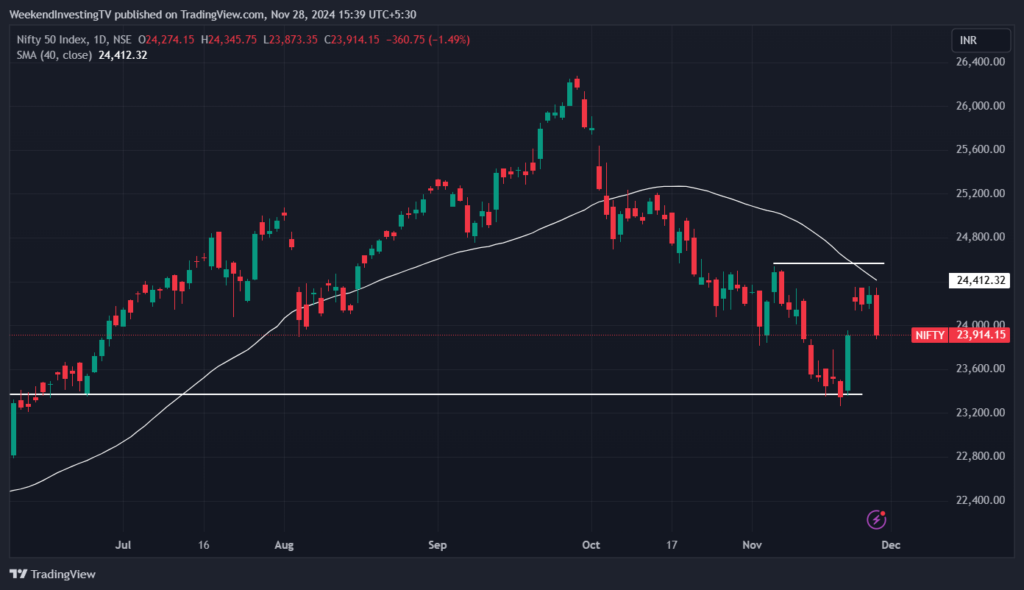
Nifty Next 50
the Nifty Next 50, and there was no major impact on the broader market, which closed just -0.1%. It seems like this may have been an expiry play on large-cap stocks within the Nifty. Remember, the Nifty is now the only index with weekly options, which means more traders are using it for expiry plays. This could make expiries even more volatile in the future.
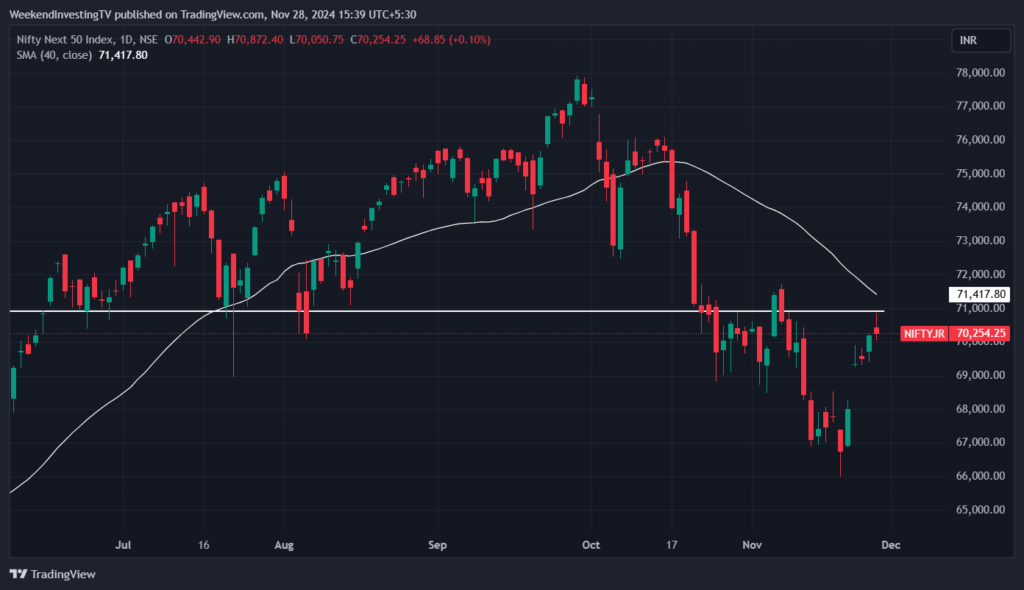
Nifty Mid and Small Cap
Looking at other indices, the Nifty mid-caps was virtually unchanged at +0.01%, and small caps were up by 0.14%. So, while the Nifty saw some weakness, other parts of the market didn’t show much change.
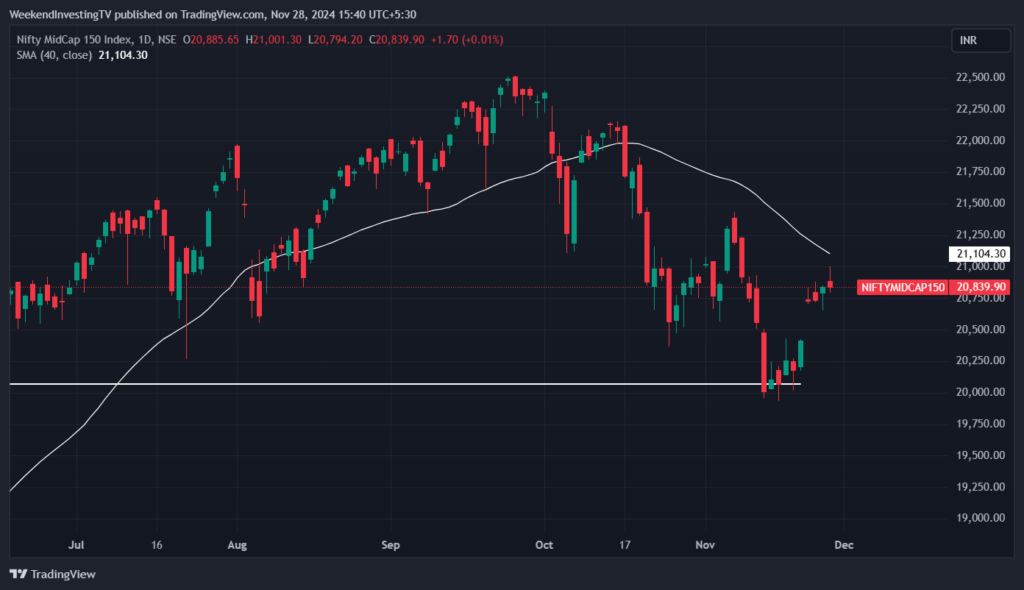
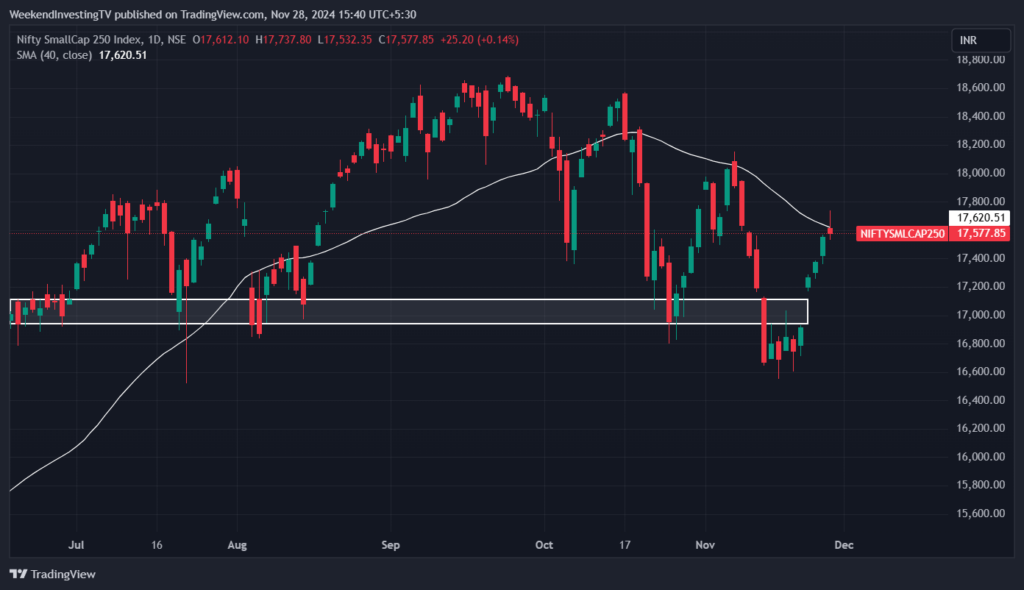
Nifty Bank Overview
The Bank Nifty was down 0.76%, largely driven by HDFC Bank, which made a new high but collapsed in the second half of the session.
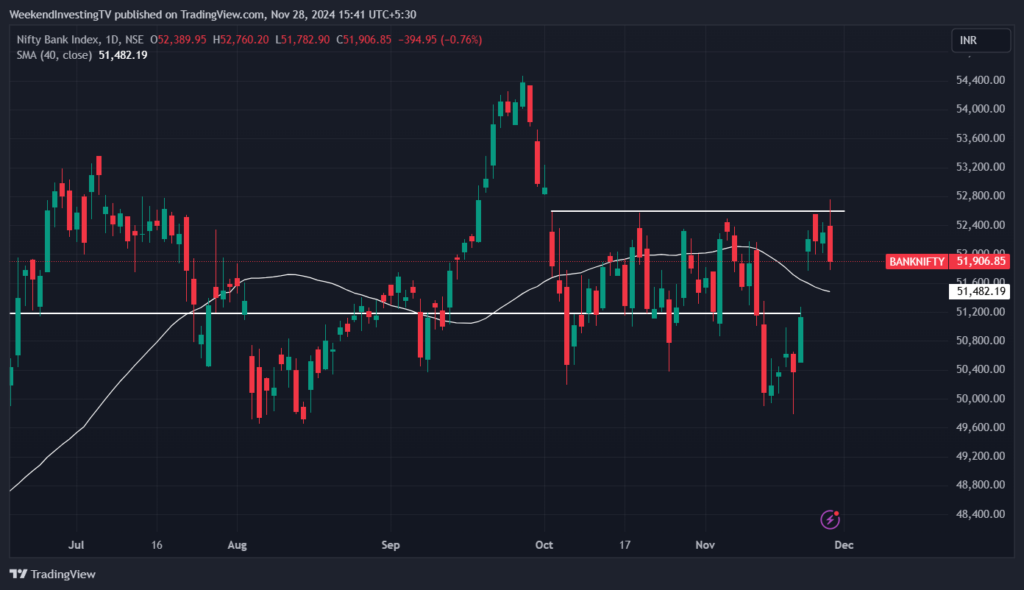
Advanced Declined Ratio Trends
Momentum trends showed 219 advances and 280 declines, which wasn’t too bad given the market’s movement, but the broader market wasn’t looking too weak either. FIIs (Foreign Institutional Investors) were net buyers for the third day in a row, though the buying amount was very low at just 7.78 crores. The DII (Domestic Institutional Investors) cash flow numbers were not available, but it seems like FIIs aren’t turning negative, which is encouraging for the market.

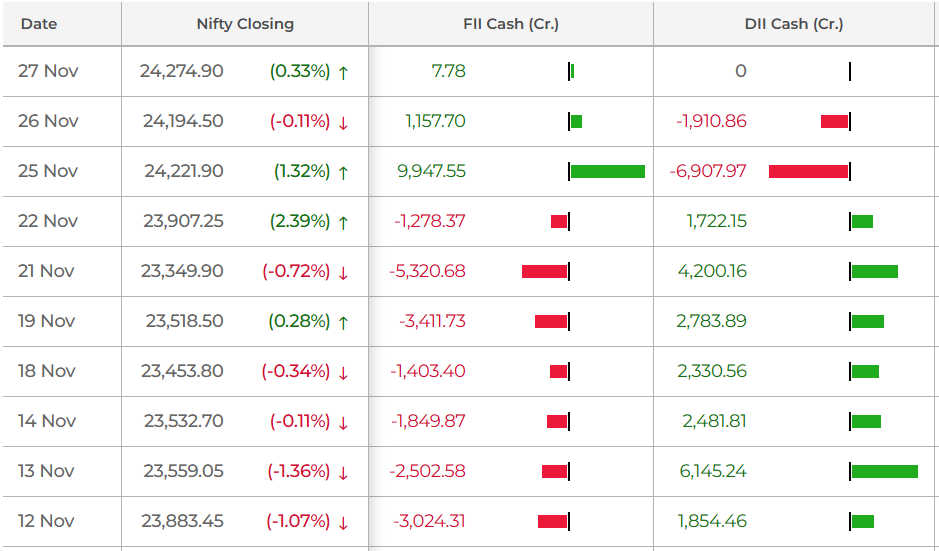
Nifty Heatmap
Today’s heatmap for the Nifty was completely red. Mahindra & Mahindra saw a sharp decline following the launch of their new car, possibly due to disappointed expectations or a sell-on-news effect. Infosys, HCL Tech, TCS, Wipro, and other tech stocks were also down significantly. It seems that IT stocks are getting nervous ahead of the new U.S. government. Reliance fell 1.73%, despite positive buy reports from analysts, and Bajaj Finance dropped 3%, while HDFC Bank and ICICI Bank also saw minor declines. Power Grid, NTPC, UltraTech Cement, and JSW all dropped more than 1%. On the other hand, Adani stocks were mixed, with some rising and some falling. Adani Total Gas, however, had a strong day, up 15-16%, and many Adani stocks have now surpassed the levels where the crisis started last week, which is surprising. It seems that the crisis may have been good for some of these stocks, as they have exceeded their pre-crisis levels. LIC, IRFC, PNB, ICICI Prudential, and others saw gains between 1.5% and 2%, while BHEL, Indigo, Dmart, and VBL also performed well. There was no major damage, except for stocks like LTIM, Nokri, DLF, and JSW Energy, which lost around 1% in the second half of the session.
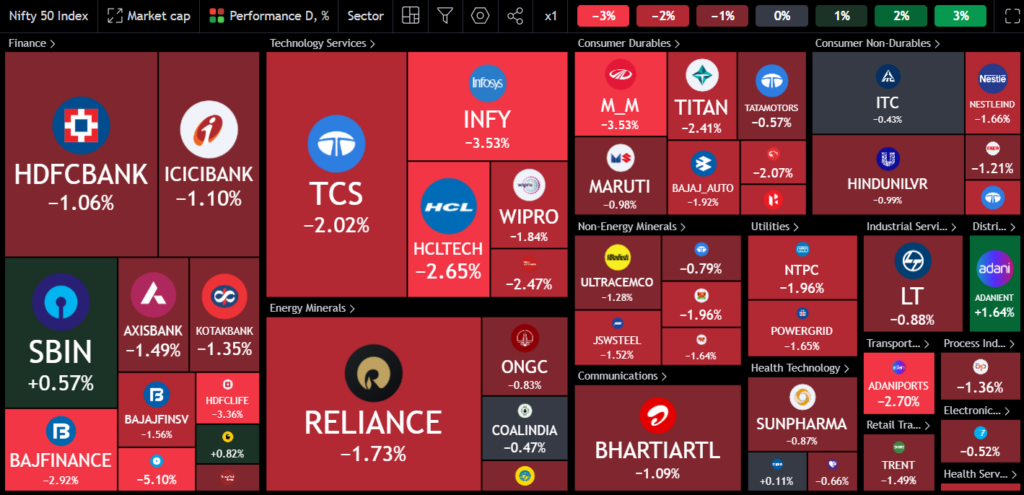
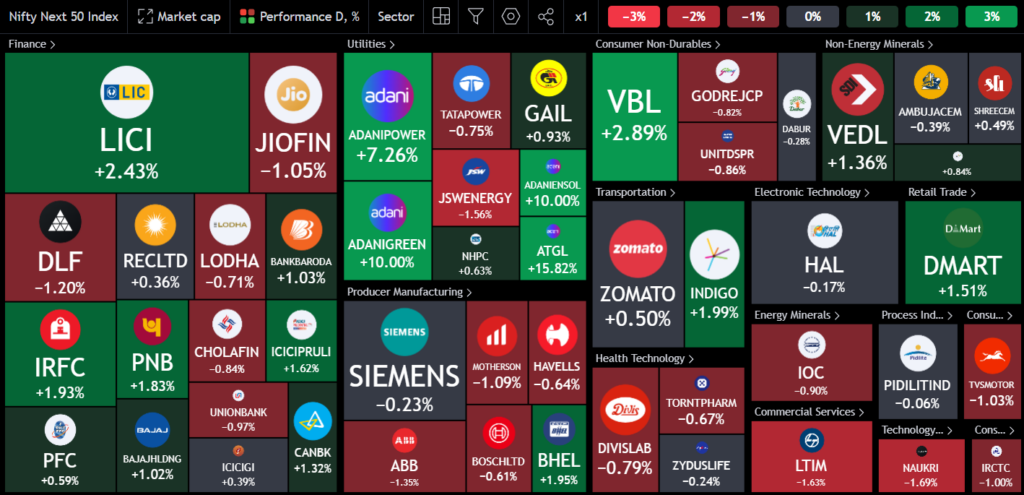
Sectoral Overview
Looking at sectoral trends, IT stocks lost the most, down 2.4%, followed by autos, which were down 1.6%. Infra, private banks, and consumption stocks lost about 1%.
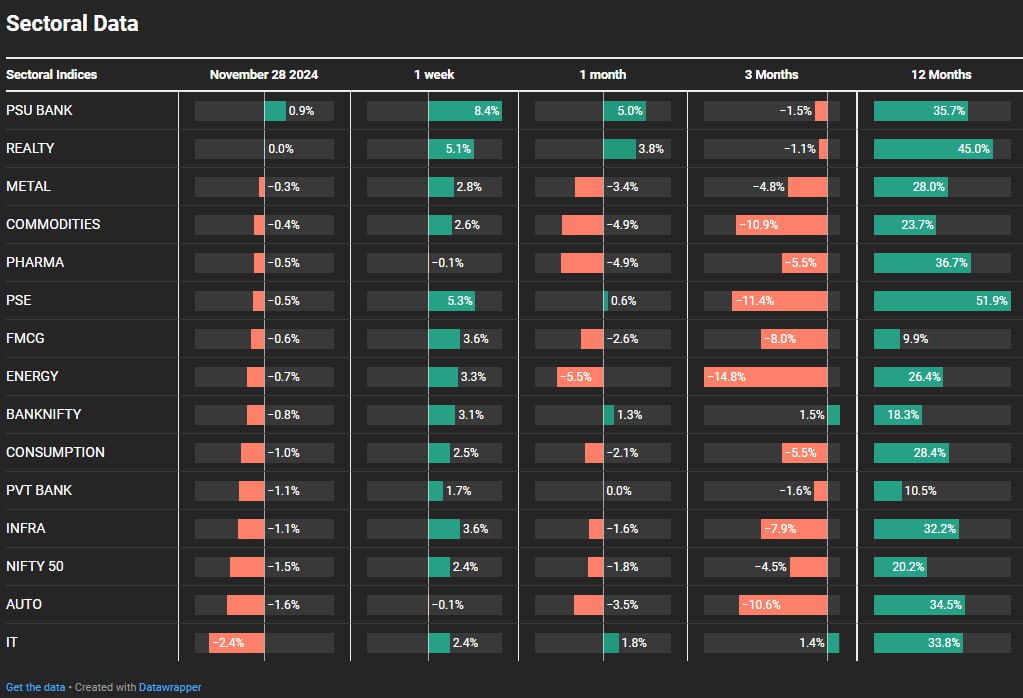
Sectors of the Day
Nifty PSU Bank Index
PSU banks held their ground, up 0.9%, primarily due to the performance of State Bank of India, and real estate stocks didn’t move much either. This is noteworthy because real estate, after a 6.1% drop last week, did not follow the broader market trend down today, and PSU banks seem to be gradually recovering after a long period of consolidation.
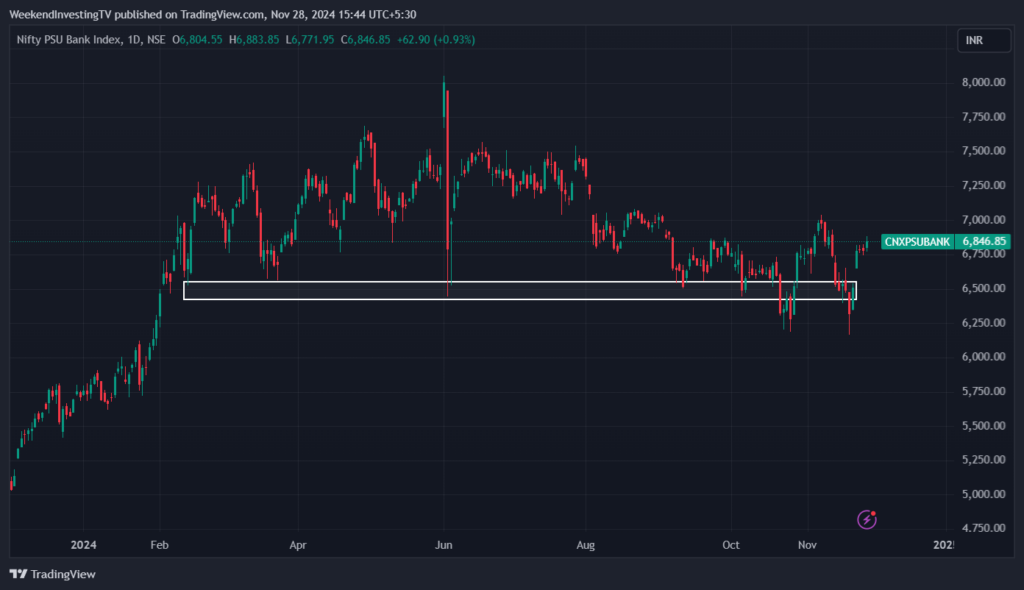
Stock of the Day
Adani Total Gas
n stock spotlight, Adani Total Gas continues to impress. After the news came out and the stock gapped down, it quickly moved higher and has now risen from 550 to 800 in just six sessions. This impressive run suggests that there is strong buying support at this level, and at least in the short term, the stock doesn’t appear weak. There could be more buying if any new controversies arise, but right now, the stock seems to be in a solid position.
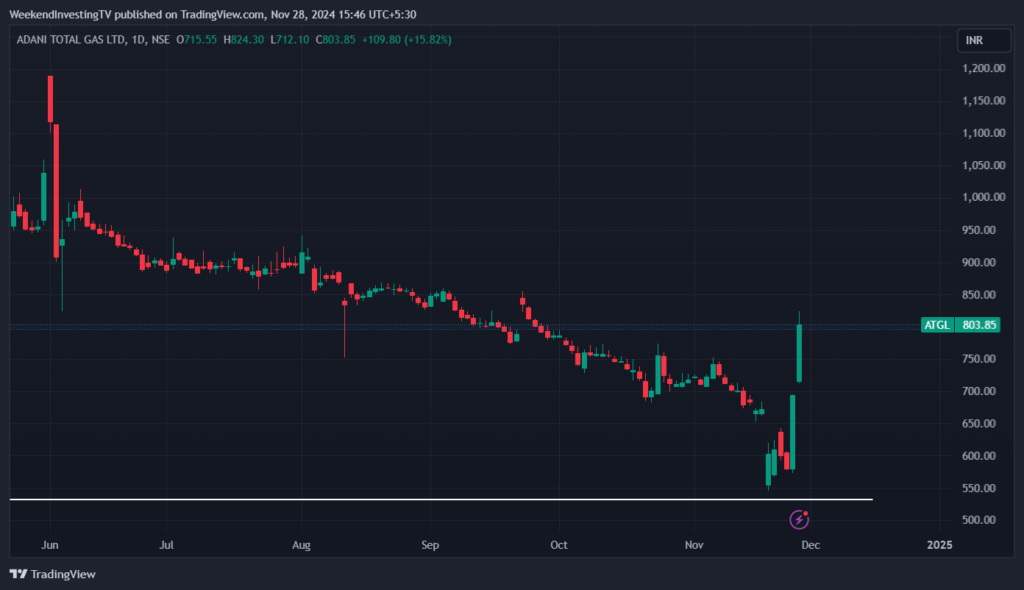
Story of the Day : U.S. election years and their impact on global markets.
According to Bravo’s research, historical U.S. elections have often marked pivotal turning points for the markets. For example, during the 1928 U.S. elections, President Hoover took office, and despite his pro-business, tax-cutting policies, the Great Depression followed, with the markets falling 88%. This event serves as a reminder that even pro-growth policies cannot always prevent a severe market downturn.
Similarly, in 1972, President Nixon’s pro-business policies couldn’t prevent a 47% drawdown in the Dow Jones Industrial Average. Markets consolidated for almost eight years before taking off again. George Bush’s presidency in 2000 saw a 39% drawdown right after his election, and the markets remained largely flat for a decade. In 2008, a 54% drawdown occurred after his presidency, despite the pro-business policies. While there may have been other factors like the Vietnam War and the dot-com crisis contributing to the downturns, these historical events underscore that elections and changes in leadership can have significant impacts on market trajectories.
The current situation in the U.S. is somewhat similar. The U.S. market has seen a strong trajectory in the past decade, but it remains to be seen whether this will continue under the new presidential leadership. As the U.S. is the “mother market” for the world, any major policy shifts, such as trade bans or changes in fiscal policy, could have far-reaching consequences globally. For instance, if the U.S. were to suddenly cut off imports from China or cease oil exports, it could cause major market disruptions.
Looking at the past year, the S&P 500 and the Nifty Index were largely in sync until September, but since then, there has been a divergence in their performance. The U.S. market has seen a surge in optimism, with narratives around deregulation, fiscal deficit cuts, and positive growth expectations. However, the sustainability of these policies is uncertain. The U.S. market is currently trading 20-30% above long-term averages, and the dollar has strengthened from 100 to 107. There is a lot of liquidity flowing into the U.S. market, but the question remains: will this continue, or will it start to unwind?
As Bravo’s research highlights, pivotal turning points in U.S. history, such as those in 1928, 1972, and 2000, were all tied to U.S. elections and new presidents taking office. While presidents have limited control over business cycles, their policies can influence market trends. It’s important to be aware of these historical patterns, as they could signal potential changes in market conditions going forward. As always, it’s crucial to stay informed and be prepared for any eventuality.



WeekendInvesting launches – PortfolioMomentum Report
Disclaimers and disclosures : https://tinyurl.com/2763eyaz
If you have any questions, please write to support@weekendinvesting.com


